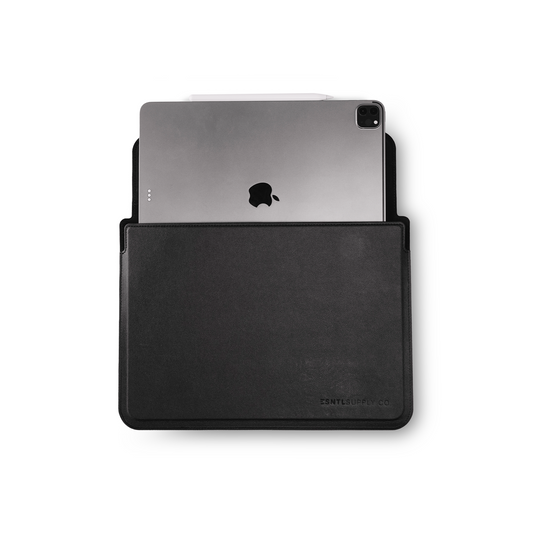Table of Contents
Introduction
Maintaining a consistent workout routine can be a daunting challenge for busy professionals who juggle multiple responsibilities and commitments. From long work hours to family obligations, it's easy for exercise to take a backseat in the midst of a hectic lifestyle. However, prioritizing exercise is crucial for overall health and well-being, especially for professionals with demanding schedules.
In this guide, we will explore the importance of creating a productive workout routine that fits into the busy lives of professionals. We will discuss the physical, mental, and emotional benefits of regular exercise, and provide practical tips on time management and prioritization. Whether you're a busy executive, a working parent, or a professional constantly on the go, this article will equip you with strategies to create a workout routine that works for you.
Are you ready to prioritize your health and well-being amidst your busy schedule? Let's dive in and discover how you can create a productive workout routine that fits your unique lifestyle and empowers you to perform at your best both professionally and personally. Join us on this journey towards a healthier and more fulfilling lifestyle.
Benefits of Regular Exercise
Regular exercise is not just about looking good or losing weight; it offers a multitude of physical, mental, and emotional benefits that are crucial for busy professionals. Incorporating exercise into your routine can significantly improve your overall well-being, leading to increased energy, enhanced productivity, reduced stress, and a better mood.

Photo by Leon Ardho
Physically, exercise is essential for maintaining optimal health. Regular physical activity helps to strengthen muscles, bones, and cardiovascular health, reducing the risk of chronic diseases such as heart disease, diabetes, and obesity. Exercise also improves flexibility, balance, and coordination, reducing the risk of injuries and improving overall physical performance.
Mentally, exercise has a profound impact on cognitive function. Studies have shown that regular physical activity can improve memory, concentration, and creativity, enhancing brain function and productivity. Exercise also releases endorphins, which are natural mood-boosting chemicals that can help reduce stress, anxiety, and depression, leading to improved mental well-being.
Emotionally, exercise can have a positive impact on mental health. Busy professionals often face high levels of stress and pressure, and exercise can be an effective way to manage and reduce these stress levels. Exercise provides an outlet for releasing tension, frustration, and anxiety, and promotes a sense of accomplishment and self-efficacy, leading to improved emotional well-being.
Furthermore, regular exercise can enhance professional performance. Increased energy levels and improved cognitive function from exercise can lead to enhanced productivity, focus, and creativity, resulting in better job performance and career success. Exercise also improves sleep quality, leading to improved mental and physical recovery, which can positively impact work performance and overall job satisfaction.
In summary, regular exercise offers a wide range of physical, mental, and emotional benefits that are essential for busy professionals. From improved health and well-being to enhanced productivity and performance, exercise is a vital component of a productive and fulfilling lifestyle. By prioritizing regular exercise, busy professionals can optimize their physical and mental health, leading to better overall well-being and success in both their personal and professional lives.
Time Management and Prioritization
One of the biggest challenges for busy professionals when it comes to maintaining a consistent workout routine is managing their time effectively. With demanding work schedules, family responsibilities, and other commitments, finding time for exercise can seem like a daunting task. However, with proper time management and prioritization, it is possible to carve out dedicated time for exercise and make it a non-negotiable part of your routine.

One effective strategy for time management is to schedule workouts in advance. Treat your exercise sessions as important appointments and block off time in your calendar for them. This can help you create a sense of commitment and accountability towards your workouts, making it less likely to be skipped or postponed. Consider scheduling your workouts during times when you typically have higher energy levels or fewer work commitments, such as early mornings, lunch breaks, or evenings, depending on your preference and schedule.
Setting realistic goals is also crucial for effective time management. Be honest with yourself about the time you can realistically dedicate to exercise, considering your other commitments and responsibilities. Avoid overloading yourself with unrealistic expectations that may lead to frustration or burnout. Instead, start with small, achievable goals and gradually increase them over time as you build consistency and momentum.
Leveraging available time slots can also be helpful in managing time effectively. Look for opportunities to incorporate physical activity into your daily routine, such as walking or biking to work, taking active breaks during the workday, or using stairs instead of elevators. These small changes can add up over time and contribute to your overall fitness level without requiring dedicated workout sessions.
Prioritization is another key aspect of managing time effectively for exercise. It's essential to make exercise a non-negotiable part of your routine and prioritize it over other non-essential activities. Evaluate your daily and weekly schedule to identify time-wasting activities that can be replaced with exercise. For example, instead of spending hours scrolling through social media or watching TV, allocate that time for exercise. Remember that making time for exercise is an investment in your health and well-being, and it should be given priority over less important activities.
In addition, it's important to communicate your commitment to exercise with your colleagues, friends, and family. Let them know that you have set aside time for exercise and that it's a priority for you. This can help you establish boundaries and avoid unnecessary interruptions during your designated workout time.
By effectively managing your time and prioritizing exercise, you can create a workout routine that fits into your busy schedule. With consistency and commitment, you can overcome the challenge of time management and make exercise a non-negotiable part of your routine for improved physical and mental well-being.
Creating a Customized Workout Routine

When it comes to building a workout routine that fits into the demanding schedule of busy professionals, it's important to customize it based on individual needs, preferences, and constraints. A one-size-fits-all approach may not be effective for everyone, as different individuals have different fitness levels, interests, and available time. Here are some tips for creating a customized workout routine that works for busy professionals:
- Assess Your Fitness Level: Before starting a workout routine, it's important to assess your current fitness level. Consider factors such as your cardiovascular endurance, strength, flexibility, and overall health. This can help you determine the types of exercises that are appropriate for your fitness level and set realistic goals for improvement.
- Identify Your Interests and Preferences: Finding exercises that you enjoy and are interested in can significantly increase your motivation and adherence to a workout routine. Consider activities that you enjoy, such as walking, jogging, cycling, swimming, weightlifting, or practicing yoga. Experiment with different exercises to find what works best for you and incorporate them into your routine.
- Consider Time Constraints: Busy professionals often have limited time available for exercise, so it's important to consider the duration of your workouts. Short, intense workouts such as High-Intensity Interval Training (HIIT) or circuit training can be effective options for time-efficient workouts. Alternatively, you can break your workouts into shorter sessions throughout the day, such as 10-minute workouts during breaks or lunchtime.
- Set Realistic Goals: It's important to set realistic goals that align with your fitness level, interests, and available time. Avoid setting overly ambitious goals that may be difficult to achieve and lead to disappointment or discouragement. Instead, set smaller, achievable goals that can be gradually increased over time as you progress.
- Plan for Progression: To keep your workouts challenging and effective, it's important to plan for progression. As your fitness level improves, gradually increase the intensity, duration, or frequency of your workouts. This can help you continue to make progress and avoid hitting a plateau.
- Be Flexible and Adaptable: Busy professionals often face unexpected changes in their schedules, so it's important to be flexible and adaptable with your workout routine. Have backup plans for days when your schedule gets disrupted, such as having a short workout routine that you can do at home or finding alternative ways to be physically active, such as taking the stairs instead of the elevator.
- Seek Professional Guidance: If you're unsure about how to create an effective workout routine or have specific health concerns, it's always a good idea to seek professional guidance. Consult with a fitness trainer, exercise physiologist, or other qualified professional who can provide personalized recommendations based on your individual needs and goals.
Remember, the key to a successful workout routine is consistency and adherence. Find a routine that works for you and fits into your busy schedule, and make it a non-negotiable part of your routine. By customizing your workout routine based on your individual needs, interests, and time constraints, you can create a plan that is sustainable and enjoyable, leading to improved fitness and overall well-being.
Incorporating Physical Activity into Daily Routine

In today's fast-paced world, finding time for physical activity can be challenging, especially for busy professionals with demanding schedules. However, incorporating regular physical activity into your daily routine is crucial for maintaining overall health and well-being. Fortunately, there are various ways to make physical activity a part of your daily routine, even with a busy lifestyle. Here are some tips for incorporating physical activity into your daily routine:
- Make It a Priority: The first step in incorporating physical activity into your daily routine is to make it a priority. Recognize the importance of physical activity for your health and well-being, and commit to making it a non-negotiable part of your daily routine. Treat it as an essential aspect of your self-care and make it a top priority, just like you would with work or other important commitments.
- Schedule It: Treat physical activity like an appointment and schedule it into your daily calendar. Block off time for exercise, just as you would for a meeting or any other commitment. This will help you prioritize and allocate time for physical activity in your busy schedule and make it more likely to happen consistently.
- Find Opportunities for Movement: Look for opportunities to incorporate movement into your daily activities. For example, take the stairs instead of the elevator, park your car farther away from your destination to get in some extra steps, or walk or bike to work if possible. Look for ways to be more active throughout your day, such as taking short walking breaks, stretching, or doing quick exercises during your breaks.
- Be Efficient with Your Time: Busy professionals often have limited time available for physical activity, so it's important to be efficient with your time. Look for exercises or activities that can be done in a short amount of time but still provide a good workout. High-Intensity Interval Training (HIIT) workouts, for example, can be done in as little as 15-20 minutes and provide a highly effective and efficient workout.
- Make it Enjoyable: Physical activity doesn't have to be boring or tedious. Find activities that you enjoy and make them a part of your daily routine. Whether it's dancing, playing a sport, hiking, or practicing yoga, choose activities that you genuinely enjoy, and it will be easier to incorporate them into your daily routine and stick with them long-term.
- Be Flexible and Creative: Life can be unpredictable, and schedules can change, so it's important to be flexible and creative with your physical activity routine. If you can't find time for a traditional workout, find alternative ways to be active. It could be taking a brisk walk during your lunch break, doing a quick workout at home, or even incorporating physical activity into your daily chores, such as gardening or cleaning.
- Get Support: Incorporating physical activity into your daily routine can be challenging, and having support can make a big difference. Find a workout buddy, join a fitness class or group, or seek support from friends or family members who share similar goals. Having someone to hold you accountable and provide motivation can make it easier to stick to your routine.
In conclusion, incorporating physical activity into your daily routine is essential for maintaining overall health and well-being, even with a busy schedule. By making it a priority, scheduling it, finding opportunities for movement, being efficient with your time, making it enjoyable, being flexible and creative, and seeking support, you can successfully incorporate physical activity into your daily routine. Remember that consistency is key, and even small bouts of physical activity throughout the day can add up to significant health benefits. So, prioritize your physical health, make it a part of your daily routine, and reap the rewards of improved physical and mental well-being.
Overcoming Challenges and Staying Motivated

Incorporating regular physical activity into your daily routine can come with its challenges, and staying motivated can be particularly difficult, especially when you have a busy schedule or face obstacles along the way. However, with the right strategies and mindset, you can overcome these challenges and stay motivated to maintain a consistent exercise routine. Here are some tips for overcoming challenges and staying motivated on your fitness journey:
- Identify and Address Barriers: The first step in overcoming challenges is to identify and address the barriers that may be hindering your ability to stay consistent with your physical activity routine. This could be lack of time, work commitments, family responsibilities, or other personal obstacles. Once you identify these barriers, brainstorm possible solutions or strategies to address them. For example, if lack of time is an issue, consider waking up earlier, rearranging your schedule, or finding shorter workout options that fit into your day.
- Set Realistic Goals: Setting realistic and achievable goals is crucial for staying motivated. It's important to set goals that are specific, measurable, and attainable. Avoid setting overly ambitious goals that may be difficult to achieve, as they can lead to frustration and loss of motivation. Start with small, achievable goals, and gradually increase the difficulty level as you progress. Celebrate your achievements along the way, and use them as motivation to keep going.
- Find Your "Why": Understanding your underlying motivation for incorporating physical activity into your daily routine can help you stay committed and focused. Reflect on the reasons why you want to be more physically active, whether it's to improve your health, reduce stress, gain more energy, or set a positive example for your loved ones. Keep your "why" in mind as a source of motivation when facing challenges or feeling demotivated.
- Create a Support System: Having a support system can greatly impact your motivation to stay consistent with your physical activity routine. Surround yourself with individuals who share similar fitness goals or seek support from friends, family, or a fitness professional. A workout buddy, an accountability partner, or a fitness community can provide encouragement, motivation, and even friendly competition, which can help you stay on track and motivated.
- Mix It Up: Doing the same exercises or activities day in and day out can lead to boredom and loss of motivation. Keep things fresh and interesting by mixing up your routine. Try different types of exercises, explore new fitness classes, or engage in outdoor activities to keep your workouts enjoyable and engaging. Variety can help prevent monotony and keep your motivation levels high.
- Track Your Progress: Keeping track of your progress can be a powerful motivator. Track your workouts, exercise duration, intensity, and any other relevant data. You can use a fitness app, a journal, or a simple spreadsheet to monitor your progress over time. Seeing the improvements and changes in your fitness level can provide a sense of accomplishment and motivation to keep pushing forward.
- Practice Self-Compassion: It's important to be kind and compassionate to yourself on your fitness journey. Recognize that setbacks and challenges are a part of the process, and it's okay to have off days or weeks. Don't beat yourself up for missing a workout or not reaching a specific goal. Instead, practice self-compassion, forgive yourself, and focus on the progress you've made and the steps you can take moving forward.
In conclusion, overcoming challenges and staying motivated on your fitness journey requires effort and mindset. By identifying and addressing barriers, setting realistic goals, finding your "why," creating a support system, mixing up your routine, tracking your progress, and practicing self-compassion, you can overcome challenges and stay motivated to incorporate regular physical activity into your daily routine. Remember that consistency and dedication are key to achieving long-term success in maintaining an active lifestyle. Don't be afraid to seek support, adapt your routine, and celebrate your achievements along the way. By overcoming challenges and staying motivated, you can reap the numerous benefits of regular physical activity, including improved physical health, mental well-being, and overall quality of life. So, keep pushing yourself, stay positive, and enjoy the journey to a healthier, more active lifestyle!
Conclusion
Creating a productive workout routine for busy professionals is essential for maintaining optimal health and well-being in the midst of a demanding schedule. By understanding the challenges, prioritizing time management, customizing workouts, and incorporating physical activity into daily routines, busy professionals can overcome obstacles and achieve their fitness goals. Staying motivated, seeking support, and celebrating achievements are crucial in this journey. Remember, investing in your health is an investment in your professional success and overall quality of life. So, take charge of your well-being, prioritize self-care, and make exercise a non-negotiable part of your busy lifestyle. Join our community of like-minded individuals who are committed to creating a balanced and healthy lifestyle amidst their busy schedules. Together, we can support each other and thrive in our pursuit of a productive workout routine for busy professionals!
Join Us
If you're a busy professional looking to create a productive workout routine that fits into your demanding schedule, join our community today! Subscribe to our newsletter, follow us on Instagram, and be part of the conversation. Share your own tips, challenges, and success stories with us. Let's support each other on this journey towards a healthier, more active lifestyle. Don't wait, take the first step towards prioritizing your health and well-being now!










